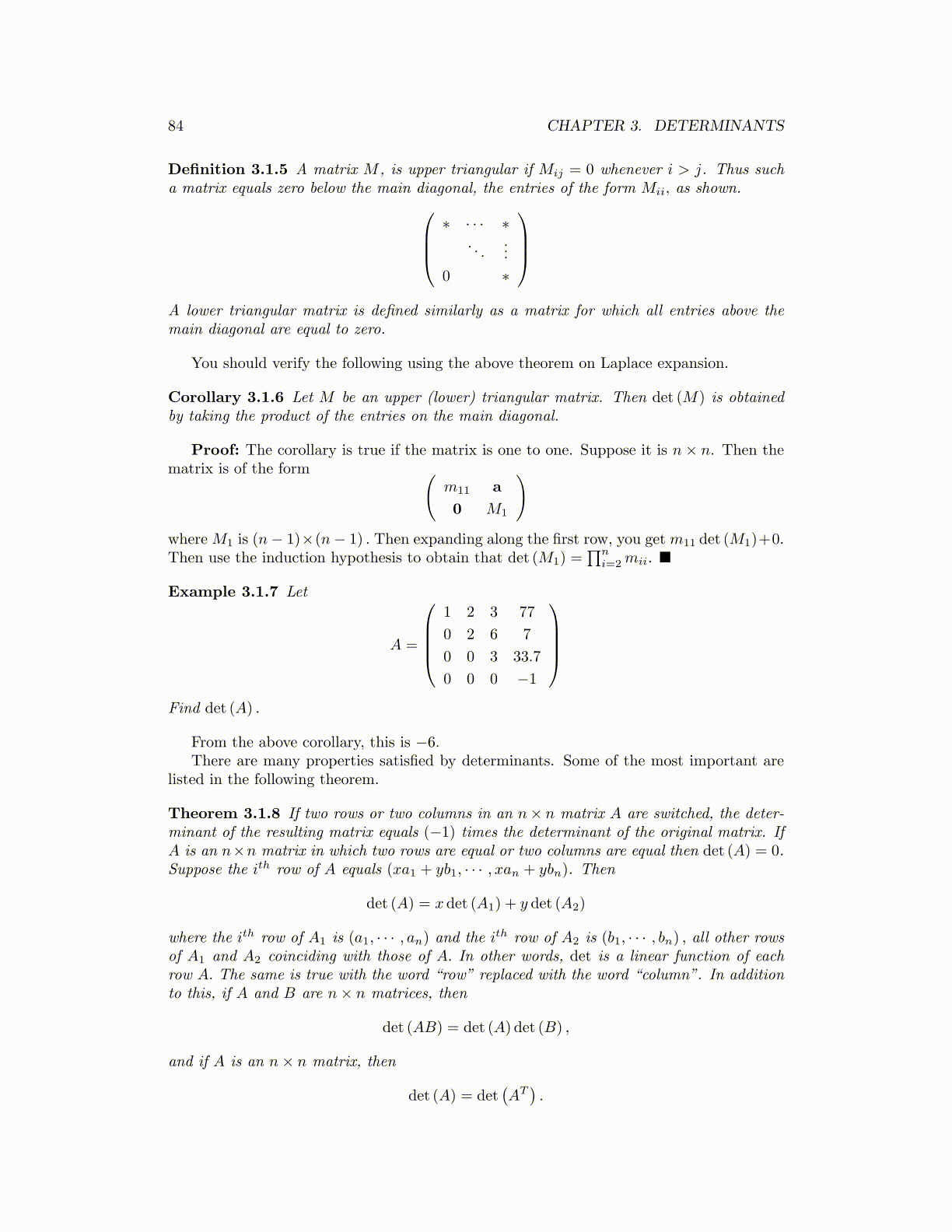
84 CHAPTER 3. DETERMINANTS
Definition 3.1.5 A matrix M , is upper triangular if Mij = 0 whenever i > j. Thus sucha matrix equals zero below the main diagonal, the entries of the form Mii, as shown.
∗ · · · ∗. . .
...
0 ∗
A lower triangular matrix is defined similarly as a matrix for which all entries above themain diagonal are equal to zero.
You should verify the following using the above theorem on Laplace expansion.
Corollary 3.1.6 Let M be an upper (lower) triangular matrix. Then det (M) is obtainedby taking the product of the entries on the main diagonal.
Proof: The corollary is true if the matrix is one to one. Suppose it is n× n. Then thematrix is of the form (
m11 a
0 M1
)whereM1 is (n− 1)×(n− 1) . Then expanding along the first row, you get m11 det (M1)+0.Then use the induction hypothesis to obtain that det (M1) =
∏ni=2mii. ■
Example 3.1.7 Let
A =
1 2 3 77
0 2 6 7
0 0 3 33.7
0 0 0 −1
Find det (A) .
From the above corollary, this is −6.There are many properties satisfied by determinants. Some of the most important are
listed in the following theorem.
Theorem 3.1.8 If two rows or two columns in an n× n matrix A are switched, the deter-minant of the resulting matrix equals (−1) times the determinant of the original matrix. IfA is an n×n matrix in which two rows are equal or two columns are equal then det (A) = 0.Suppose the ith row of A equals (xa1 + yb1, · · · , xan + ybn). Then
det (A) = xdet (A1) + y det (A2)
where the ith row of A1 is (a1, · · · , an) and the ith row of A2 is (b1, · · · , bn) , all other rowsof A1 and A2 coinciding with those of A. In other words, det is a linear function of eachrow A. The same is true with the word “row” replaced with the word “column”. In additionto this, if A and B are n× n matrices, then
det (AB) = det (A) det (B) ,
and if A is an n× n matrix, then
det (A) = det(AT).